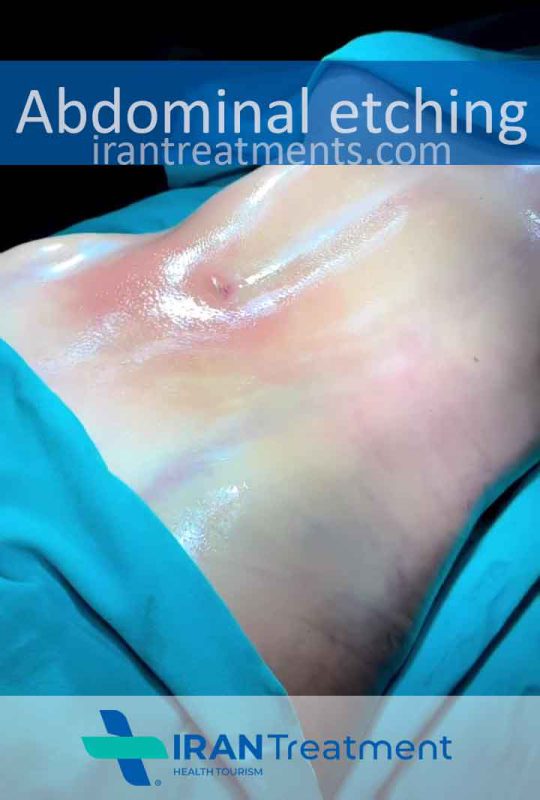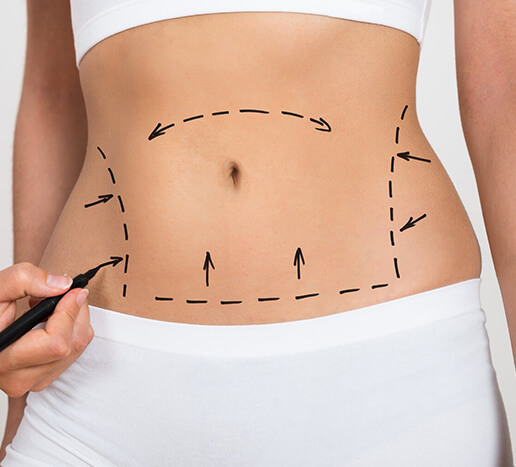Abdominal plastic surgery in Iran
Abdominal plastic surgery in Iran is a term that refers to a variety of surgical procedures aimed at improving the appearance of the abdominal area. These procedures can help to remove excess skin and fat, tighten underlying muscles, and create a smoother, more toned appearance. Some common types of Abdominal plastic surgery in Iran include:
1. Tummy Tuck (Abdominoplasty):
This is a surgical procedure that involves removing excess skin and fat from the lower and middle abdomen and tightening the abdominal wall muscles. It is commonly performed on individuals who have experienced significant weight loss or after pregnancy to help restore the appearance of the abdomen. شد البطن في ايران
2. Liposuction:
This is a minimally invasive procedure that removes localized fat deposits from various areas of the body, including the abdomen. It is best suited for individuals who are close to their ideal body weight but have stubborn pockets of fat that do not respond to diet and exercise.
Liposuction in Iran – Sample before and after and price 2023
3. Mini Tummy Tuck (Partial Abdominoplasty):
This is a less invasive version of a full tummy tuck, focusing on the lower abdomen only. It is suitable for individuals with a smaller amount of excess skin and fat or those who have muscle laxity limited to the lower abdomen.
4. Panniculectomy:
This procedure is specifically designed to remove the large overhanging “apron” of skin and fat (called a pannus) that can occur after massive weight loss or in individuals with obesity. It does not involve tightening the abdominal muscles.
5. Abdominal Etching:
This is a specialized form of liposuction that aims to create more defined abdominal muscles by removing small amounts of fat around the muscle contours. It is best suited for individuals who already have a relatively toned abdomen and want to enhance their muscle definition further. Abdominal etching
As with any surgical procedure, there are risks and potential complications associated with Abdominal plastic surgery in Iran. These can include infection, bleeding, poor wound healing, scarring, changes in skin sensation, and complications related to anesthesia. It is essential to discuss your goals and expectations with a board-certified plastic surgeon and carefully consider the potential risks and benefits before deciding to undergo Abdominal plastic surgery in Iran.

ABDOMINAL PLASTIC SURGERY IN IRAN RECOVERY TIME AND POST-OP CARE
Abdominal plastic surgery in Iran typically requires a significant recovery time and post-operative care. Here are some key things to know:
• Hospital stay: Most abdominal procedures require a hospital stay of 2 to 4 days. This allows for pain management, drain care, and monitoring during the initial recovery.
• Rest: Getting plenty of rest is important for proper healing and recovery. Limit physical activity and strenuous exercise for 4 to 6 weeks. Walking and light activity is ok, but avoid heavy lifting, aerobics, etc.
• Pain management: Both over-the-counter and prescription pain medications are usually provided to manage pain from the procedure. Use as directed to keep pain levels controlled.
• Drains: Temporary drains are often inserted to remove excess fluid and blood. They will need to be emptied and monitored until removed, usually 7 to 14 days after surgery.
• Bandages and compression garments: The incision site and abdomen will be bandaged. An elastic compression garment is worn for 6 weeks to aid swelling reduction and support abdominal tissues.
• Diet: Start with clear liquids, then progress slowly to soft foods, as tolerated. A high-protein, nutritious diet is important for healing. Stay hydrated and maintain a good fiber intake to avoid constipation.
• Follow-up appointments: Stitches or sutures are usually removed 7 to 14 days post-op. Additional follow-ups will be needed to monitor recovery and healing. Most patients can return to light work / normal activity in 4 to 6 weeks.
• Swelling: Abdominal swelling is normal and will subside over the first 4 to 6 weeks. Applying cold compresses, keeping legs elevated, and walking can help minimize swelling.
• Scarring: Incision scars will fade over 6 to 12 months. Silicone sheeting or creams may be used to aid scar reduction once incisions have healed. Sun protection is important for the first year to prevent scarring.
• Risks to monitor: Signs of infection, blood clots, or other complications. Call your surgeon immediately if you notice increased pain, redness, swelling, or other issues.
That’s an overview of what to expect regarding Abdominal plastic surgery in Iran recovery and post-operative care. Be sure to follow all instructions from your surgeon closely for safe recovery and healing. Let me know if you have any other questions!
AM I A CANDIDATE FOR ABDOMINAL PLASTIC SURGERY IN IRAN
There are several factors that determine if you are a good candidate for abdominal plastic surgery:
• Excess abdominal fat and skin: The most common reason for abdominal plastic surgery is excess fat and loose skin in the abdomen that does not improve with diet and exercise. Plastic surgery can remove fat and tighten abdominal muscles and skin.
• Previous weight loss: Massive weight loss, such as from bariatric surgery or diet and exercise, often results in excess sagging skin that requires surgical intervention to remove. Abdominal plastic surgery can remove loose skin folds and stretch marks.
• Muscle separation: Pregnancy can cause abdominal muscles to separate, resulting in a protruding belly. A tummy tuck can tighten abdominal muscles through a procedure called abdominal wall plication.
• Stretch marks: While stretch marks alone do not require plastic surgery, a tummy tuck can remove stretch marks in the area of loose skin excision. Remaining stretch marks may still fade over time with laser or cream treatments.
• Good health: The ideal candidate is in good health, at or close to their ideal weight, and has realistic expectations about surgical outcomes. Certain medical conditions like diabetes or blood clotting issues may increase surgical risks. Your doctor will evaluate your medical and health history.
• Non-smoker: Smokers have a higher risk of complications like wound healing problems, so surgeons typically require patients to quit smoking for a certain period of time before and after surgery.
• Finished with pregnancies: Pregnancy can reverse the effects of an abdominoplasty. Women should wait until they are done having children before considering abdominal recontouring procedures.
• Motivated for self-improvement: The best candidates have a positive outlook and are seeking abdominal plastic surgery to improve their self-confidence and quality of life. Candidates should not have unrealistic expectations about how life will change after surgery.
• Committed to healthy lifestyle: To achieve and maintain good results, candidates must be committed to long-term lifestyle changes to promote health, proper nutrition, and exercise. Gaining and losing weight repeatedly can compromise surgical results.
If you meet these criteria, you are likely a good candidate for abdominal plastic surgery. However, only a plastic surgeon can properly evaluate your situation to determine if you are an ideal candidate and if the benefits would outweigh any risks. Be open and honest during your consultation about your health, goals, and lifestyle to find the best options for your needs.

